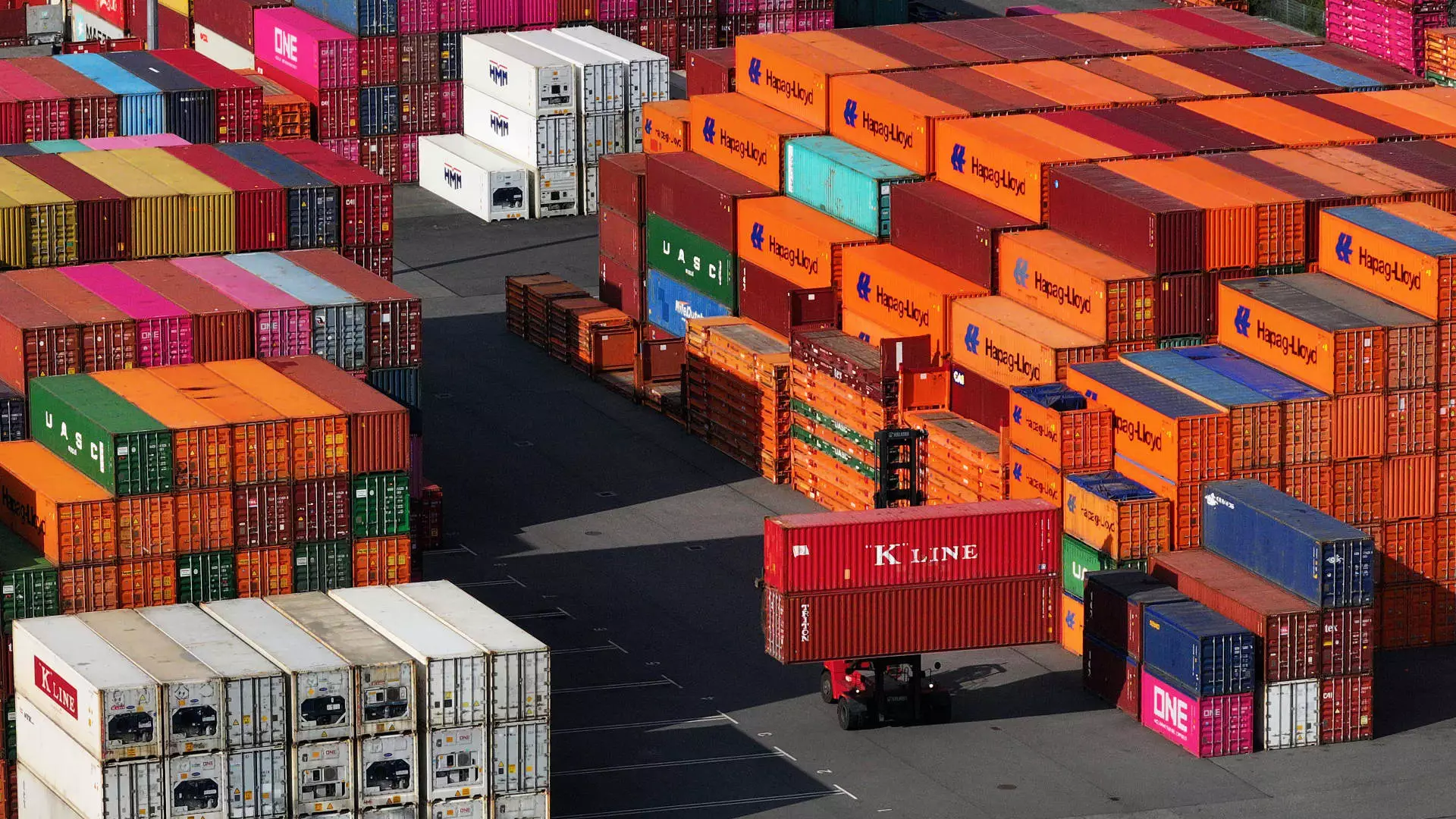In the unpredictable landscape of the U.S. economy, where businesses grapple with uncertainty over tariffs, President Donald Trump has passionately advocated for a fiscal strategy that seems both audacious and misguided. By suggesting that tariffs could potentially replace federal income taxes, Trump not only raises eyebrows but also ignites skepticism among seasoned economists. The notion is as bold as it is unfounded, and as it stands, it exemplifies a disconcerting approach to handling economic policy.
Trump’s lofty claims, such as the assertion made in a Fox interview that “there is a chance that the money from tariffs could be so great that it would replace the income tax,” reflect a stark misunderstanding of economic fundamentals. Trump’s suggestion was not isolated; he had previously hinted at this somewhat romantic notion during his campaign. However, turning rhetoric into reality would require significant congressional action, and to think that sweeping changes could arise from tariffs is naive at best.
The Numbers that Don’t Add Up
As economists sift through Trump’s tariff dreams, glaring inconsistencies emerge. The proposed tariff revenue is nowhere near sufficient to supplant the income tax system, which generates trillions annually. For instance, the U.S. imported a formidable $3.1 trillion worth of goods in 2023. In stark contrast, the income tax base measures over $20 trillion. To think that the meager revenue from tariffs could replace a system that is so much broader is increasingly viewed as a pipe dream.
The White House’s trade advisor, Peter Navarro, tossed around numbers that purported to forecast annual tariff revenues reaching an astonishing $600 billion. Yet, expert analysis quickly dismantles this assertion, with Moody’s chief economist Mark Zandi bluntly stating that even half that figure is a stroke of luck. In a reality check, economists like Kimberly Clausing argue that the tariff tax base simply pales in comparison to income taxes, making Trump’s aspirations not just optimistic, but utterly unrealistic.
The Illusion of Tax Replacement
One of the critical arguments against a tariff-centric revenue model is the dynamic nature of consumer behavior. Increasing tariffs may initially spike revenue, but they inevitably lead to decreased consumption of imported goods. As prices rise due to tariffs, consumers shift their spending patterns, purchasing less and ultimately diminishing the revenue stream. This paradox illustrates how an inflexible tariff strategy could backfire, yielding diminishing returns for a government that overly relies on such measures.
Moreover, the very foundation of a tariff-driven model is undermined by underlying economic principles. Tariff revenues are not a one-way street; they interact intricately with the broader economy. For every increase in tariffs, a corresponding decline in GDP could occur, thus affecting total revenue collected. The January report from the International Monetary Fund, which revised U.S. growth projections down to 1.8% from an optimistic 2.7%, underscores these dire implications. Let’s face it: when tariffs are worsened, economic growth suffers, leading to revenues that fall short of expectations.
A Deeper Look at Policy Impacts
Delving deeper into the mechanics of the policy, the Tax Foundation warns of the cascading effects that arise from increased tariffs. Their projections indicate that while a universal 10% tariff might conjure up $2.2 trillion in revenue over the next decade, the accompanying impact on GDP would be a hefty -0.4%. This raises a crucial question: is a dollar earned through tariffs worth the economic contraction it could provoke?
As the administration veers towards a strategy whose unlikeliness grows with each new data point, one must wonder if the push for aggressive trade negotiations is driven by policy expertise or sheer ideology. Historically, tariffs have been a double-edged sword. While they are often positioned as protective measures for local industries, the long-term scrutiny emphasizes a stark reality: protectionism can stunt economic growth instead of bolstering it.
President Trump’s fervent hopes of replacing income tax with revenue from tariffs appear more like a fantasy than a feasible strategy. With gaps in logic and the potential for economic decline, we must critically evaluate whether such a bold path offers any real benefits or simply paves the way for further fiscal instability.


Leave a Reply